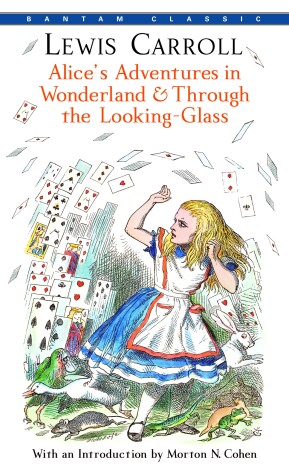I had no clue that the book would be so crazy. I'm a great fan of everything Alice in Wonderland, and especially the video game Madness Returns. The game is wonderfully crazy and weird, with snouts you have to pepper and teapots with three legs that come after you. I always thought the makers of the game took great liberties with the book, but on reading Alice in Wonderland & Through the Looking-Glass I now see the utter genius of what they've done. Of course it doesn't really follow the book, but they took so many little elements (like the vorpal blade from the Jabberwock poem) that make discovering all the details a blast.
The story was dreamy and wonderfully weird, and makes no sense at all. It was very interesting to see how the not-making-sense-ness started to make sense in a while. If you know what I mean. Alice took al the weird changes great as well, it was almost as if she was expecting them. I think a lot of children would be able to relate with Alice. She has the licentiousness that only children have. She constantly doubts everything, to the annoyance of the Wonderland creatures. Her social clumsiness also leads to a lot of interesting happenings.
I had an amazing time reading both Alice's Adventures in Wonderland and Through the Looking-Glass, but I preferred the first book. The second one felt a bit more structured, but it also sucked out a bit of the unpredictability and just plain fun of randomness. Through the Looking-Glass did have some gems of word-plays, this one was one of my favourites:
"How is it you can all talk so nicely?" Alice said, hoping to get it into a better temper by a compliment. "I've been in many gardens before, but none of the flowers could talk."
"Put your hand down, and feel the ground," said the Tiger-lily. "Then you'll know why."
Alice did so. "It's very hard," she said, "but I don't see what that has to do with it."
"In most gardens," the Tiger-lily said, "they make the beds too soft -- so that the flowers are always asleep."
Reading these two books makes me want to see the latest movie again (I just love how the Queen screams "Off with their heads!"). I'm definitely keeping this book for rereads in the future.
